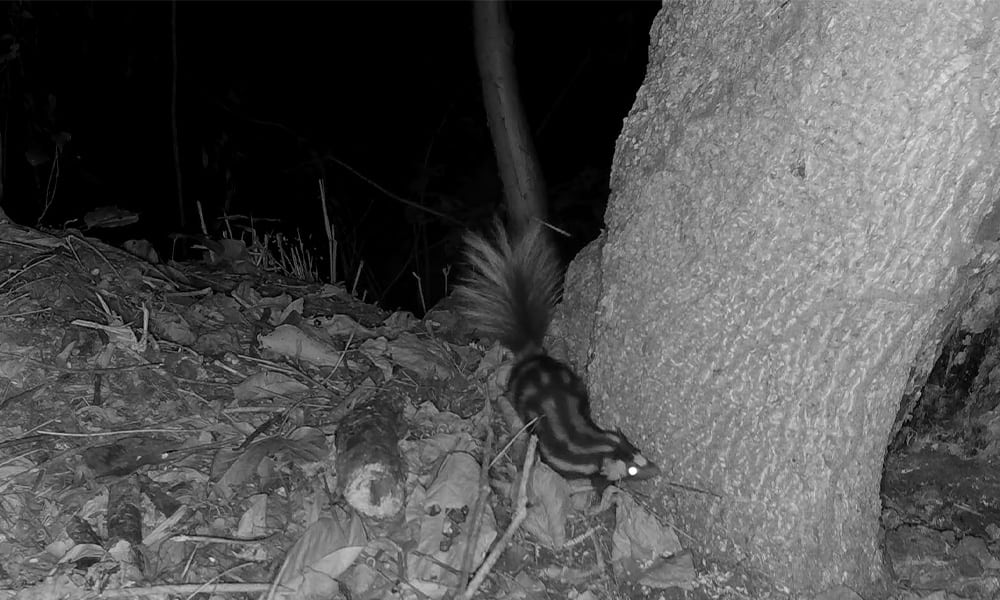I get it, nobody likes skunks. They smell like rotten eggs. They’ve sprayed you or they’ve sprayed your dog, forcing you to take some sort of strange action like bath in tomato sauce. But let’s forget all of that for second and look at this interesting group of animals with new eyes.
Meet the spotted skunk (Spilogale angustifrons (not terrible to pronounce)). The spotted skunk is one of three species of skunk that call Costa Rica home. And just like our friend the tayra, they are a member of the weasel family. The name in Spanish is zorro hediondo manchado which translates directly to ‘spotted stink fox’ which isn’t super accurate but is hilarious.
To be fair, the name in English is not wildly accurate either. I guess you could say they’re spotted but most of the time their ‘spots’ are more like stripes or irregular white patterns on a black background.
However you describe their pattern, I think it’s fair to say they’re pretty. Each individual has a unique pattern but almost all of them have a white patch on their forehead and a white tip at the end of their tail. Coming in at about 10 inches long and 1 pound, they are the smallest of Costa Rica’s skunk species.
Spotted skunks are nocturnal. Some species are listed as nocturnal but I’ll still record them during the day with camera traps from time to time. That’s not the case here. Of the several hundred spotted skunk videos I’ve recorded, every single one has been at night. And for the same reason, I’ve never encountered one in the forest (I’m diurnal).
The spotted skunk can be described as omnivorous because they do occasionally eat fruit but most of the time they are eating insects, rodents, snakes, small vertebrates and carrion. Rattlesnake remains have been found in spotted skunk poop, and there is some evidence that they are immune to rattlesnake venom, making them one of the few animals that can make a rattlesnake into a meal.
Ok, now that we’ve learned that they’re a member of the weasel family, that they’re pretty and that they can eat rattlesnakes, let’s talk about the fact that they do indeed stink. But the manner in which they stink is by far the most interesting fact in this article.
If you, or any other creature that poses a threat, starts messing with a spotted skunk, the first thing that happens is that it raises it’s white-tipped, puffy little tail straight up as a warning sign.
If the threat persists one of two things can happen. Sometimes they will swing their little body around so their tail-end is facing the threat, arch their head around to take good aim and fire their rotten egg musk at the silly creature that couldn’t take a hint.
But sometimes they decide to showoff their gymnast skills and face the threat head on. They will stand on their front paws, arch their backs above their little heads and fire away while doing a headstand. They can even walk forward on their front paws to get a closer shot. It’s really fantastic.
Spotted skunks are mostly found within the confines of Guanacaste and since most of my camera trap projects are in Guanacaste, I record them frequently. I usually record them on the move (always at night) probing holes or fallen logs for something to eat. They also seem to like to investigate cavities at the base of large trees, and I’ve even recorded them climbing tree trunks. So, take a look at the video below and learn to love the spotted skunk (even though it stinks).
About The Author
Vincent Losasso, founder of Guanacaste Wildlife Monitoring, is a biologist who works with camera traps throughout Costa Rica. Learn more about his projects at: Instagram and facebook or by email.

